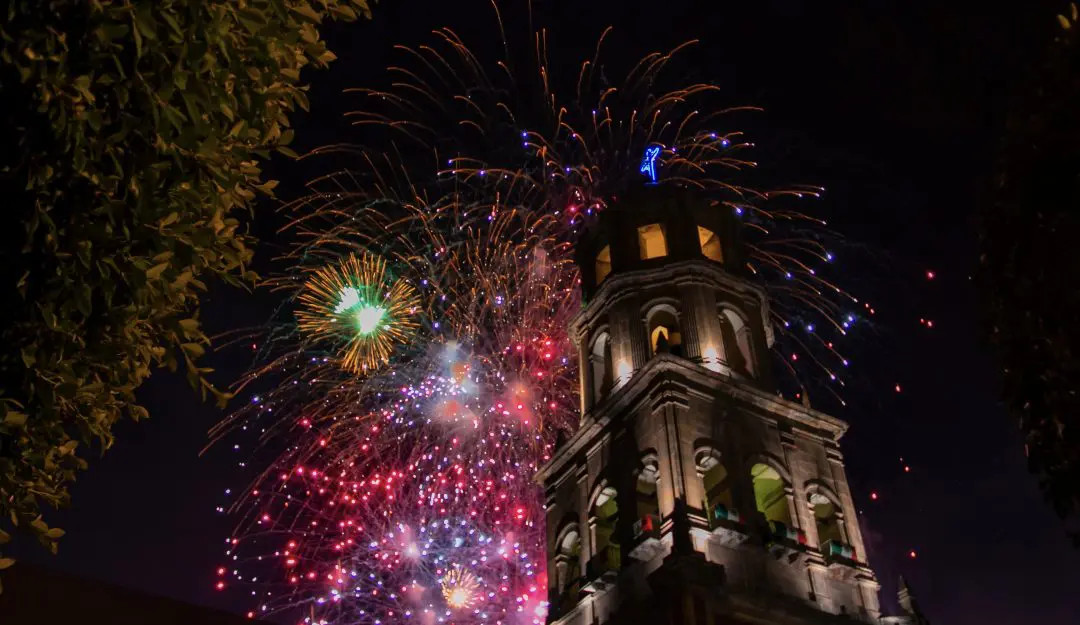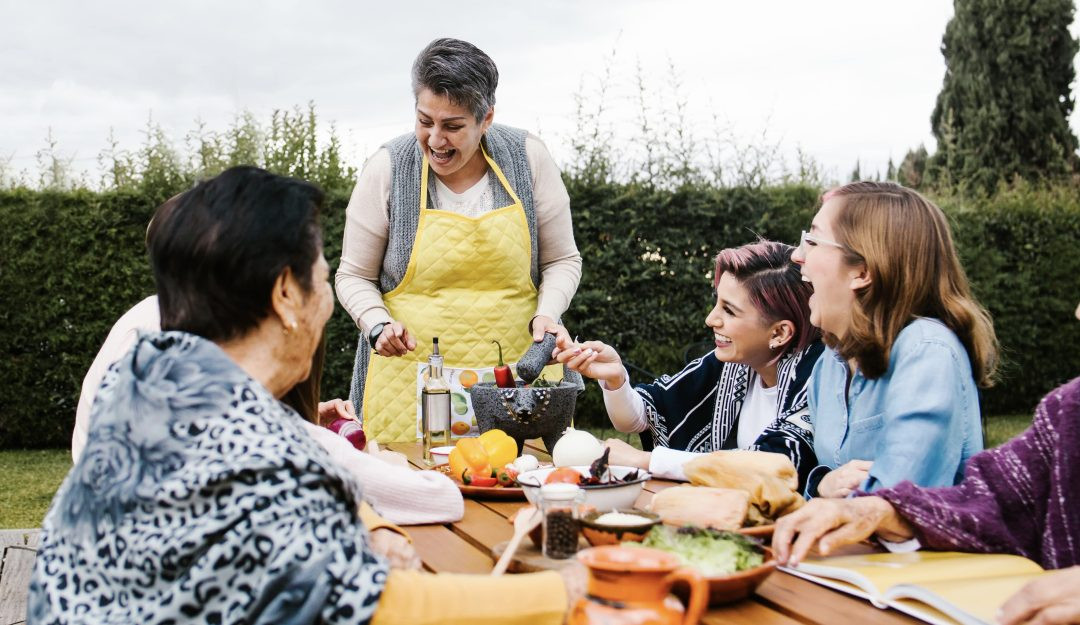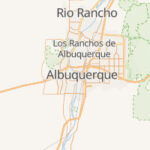Does Mexico Celebrate Independence Day with vibrant festivities and cultural pride? Absolutely! At gaymexico.net, we understand the importance of experiencing authentic celebrations while traveling as part of the LGBTQ+ community. Discover how Mexico honors its independence with parades, feasts, and spirited gatherings, and learn how you can join the celebration safely and inclusively. Explore LGBTQ+ friendly festivities, historical insights, and the vibrant culture of Mexico with us.
1. What is Mexico’s Independence Day and When Is It Celebrated?
Mexico’s Independence Day commemorates the country’s liberation from Spanish rule. It is celebrated annually on September 16th. However, the festivities begin the night before, on September 15th, with “El Grito de Dolores,” a reenactment of the call to arms that ignited the revolution. This event is a cornerstone of Mexican patriotism and cultural identity.
The celebrations extend throughout September, known as “El Mes de la Patria” (the Month of the Homeland), with various patriotic events and activities. This month-long celebration underscores the significance of independence in Mexican culture and provides numerous opportunities for visitors to immerse themselves in the country’s rich heritage. According to the History Channel, the fight for Independence lasted over a decade and ultimately changed the course of Mexican history.
2. What is the Historical Significance of Mexico’s Independence?
Mexico’s independence marks the end of nearly 300 years of Spanish colonial rule. The struggle for independence was ignited on September 16, 1810, by Father Miguel Hidalgo’s “Grito de Dolores,” a call to arms in the town of Dolores (now Dolores Hidalgo, Guanajuato). The movement sought to overthrow the Spanish colonial government and establish an independent Mexican nation.
The fight for independence was long and arduous, lasting over a decade and involving numerous key figures, including José María Morelos and Vicente Guerrero. These leaders played crucial roles in sustaining the revolution despite setbacks and challenges. Finally, in 1821, the Treaty of Córdoba was signed, officially recognizing Mexico’s independence. This pivotal moment in Mexican history is celebrated with immense pride and commemorated through vibrant festivities.
3. How Do Mexicans Celebrate Independence Day?
Mexicans celebrate Independence Day with a vibrant display of patriotism, culture, and community spirit. The festivities include:
- El Grito de Dolores: Reenacted in every city and town, with government officials leading the crowd in shouting patriotic slogans and the iconic “¡Viva México!”
- Parades: Featuring military personnel, floats, and cultural performances, showcasing Mexico’s history and traditions.
- Fireworks: Lighting up the night sky with dazzling displays of color and sound, symbolizing the nation’s freedom.
- Traditional Music and Dance: Mariachi bands, folk dancers, and other performers fill the streets with lively music and dance, celebrating Mexico’s diverse cultural heritage.
- Festive Food: Traditional dishes like chiles en nogada and pozole are prepared and shared among family and friends, representing the colors of the Mexican flag and the flavors of the nation.
These celebrations reflect the deep sense of national pride and unity that characterizes Mexican Independence Day.
4. What is El Grito de Dolores?
El Grito de Dolores is the historical event that is commemorated every year on the night of September 15th, marking the start of Mexico’s Independence Day celebrations. The Cry of Dolores is a tradition reenacted in every city across Mexico on the night of September 15. In the capital, the Mexican president appears with the flag on a balcony at 11:00 p.m. In provinces, the government or municipal president will appear, and Mexican ambassadors in foreign countries may do the same.
They yell out a few exclamatory phrases remembering those who fought for independence and end with the phrase: ¡Viva México! (“Long Live Mexico!”) and the ringing of a bell. Everyone shouts back ¡Viva México! Then sings the National Anthem. After that, the festivities officially start! But some people choose to start their celebration early at home and watch El Grito on television.
 Mexican Independence Day celebration with fireworks over Mexico City
Mexican Independence Day celebration with fireworks over Mexico City
5. What Traditional Foods Are Eaten During Independence Day Celebrations?
During Mexico’s Independence Day celebrations, a variety of traditional dishes take center stage, each representing the country’s rich culinary heritage.
- Chiles en Nogada: Perhaps the most iconic dish of the season, chiles en nogada feature poblano peppers stuffed with a mixture of fruits and ground meat, topped with a creamy walnut sauce and pomegranate seeds. The green pepper, white sauce, and red pomegranate seeds mirror the colors of the Mexican flag.
- Pozole: This hearty stew is made with hominy and meat (usually pork or chicken), simmered in a flavorful broth and garnished with shredded cabbage, radishes, onions, and lime.
- Enchiladas: Corn tortillas filled with meat, cheese, or beans, covered in a chili sauce, and baked to perfection.
- Tamales: Dough made from masa (corn dough) filled with savory or sweet ingredients, wrapped in corn husks or banana leaves, and steamed until tender.
These dishes are enjoyed with family and friends, enhancing the festive atmosphere of the celebrations.
6. What Role Does Music and Dance Play in the Celebrations?
Music and dance are integral to Mexico’s Independence Day celebrations, filling the streets with vibrant energy and cultural expression.
- Mariachi Music: Mariachi bands, with their distinctive instrumentation and passionate vocals, perform traditional Mexican songs that evoke feelings of patriotism and pride.
- Folkloric Dance: Dancers in colorful costumes perform traditional dances that showcase the diverse regional cultures of Mexico.
- Banda Music: A genre of Mexican music characterized by its brass band instrumentation and upbeat rhythms, banda music is popular at Independence Day celebrations.
- Other Traditional Music: Various other forms of traditional Mexican music, such as son jarocho and huapango, may also be featured at the celebrations.
These musical and dance performances enhance the festive atmosphere, bringing people together to celebrate their shared heritage.
7. What is the Significance of the Mexican Flag and National Symbols During Independence Day?
The Mexican flag and other national symbols hold deep significance during Independence Day, representing the country’s history, values, and identity.
- The Mexican Flag: The flag’s green stripe symbolizes hope, the white stripe represents unity, and the red stripe stands for the blood of the national heroes. The coat of arms in the center depicts an eagle devouring a serpent, a symbol rooted in Aztec legend that represents the triumph of good over evil.
- The National Anthem: The Mexican national anthem, with its stirring melody and patriotic lyrics, is sung with pride at Independence Day events, evoking feelings of national unity and solidarity.
- Other National Symbols: Other symbols, such as the Virgin of Guadalupe and images of national heroes like Miguel Hidalgo and José María Morelos, are also prominently displayed during the celebrations, reinforcing the country’s historical narrative and cultural values.
These symbols serve as powerful reminders of Mexico’s struggle for independence and its enduring national identity.
8. How Can LGBTQ+ Travelers Safely and Respectfully Participate in the Celebrations?
LGBTQ+ travelers can safely and respectfully participate in Mexico’s Independence Day celebrations by following these guidelines:
- Research LGBTQ+ Friendly Destinations: Some cities and regions in Mexico are more LGBTQ+ friendly than others. Research destinations like Puerto Vallarta, Mexico City, and Cancun, which have established LGBTQ+ communities and welcoming atmospheres.
- Be Aware of Local Laws and Customs: Familiarize yourself with Mexico’s laws and customs regarding LGBTQ+ rights and public displays of affection. While Mexico City has made great progress, other areas are still catching up.
- Exercise Discretion: Depending on the location, it may be wise to exercise discretion regarding public displays of affection. Holding hands or a quick kiss may be acceptable in more liberal areas but could attract unwanted attention in more conservative regions.
- Attend LGBTQ+ Events: Look for LGBTQ+ specific events or parties that may be organized during Independence Day celebrations. These events provide a safe and inclusive space to celebrate with fellow members of the community.
- Respect Cultural Norms: Be respectful of Mexican culture and traditions. Participate in the celebrations with enthusiasm but avoid behaviors that could be seen as disrespectful or offensive.
- Connect with Local LGBTQ+ Organizations: Reach out to local LGBTQ+ organizations for information and support. They can provide valuable insights into the local LGBTQ+ scene and offer guidance on how to navigate the celebrations safely.
- Use Trusted Resources: Rely on trusted resources like gaymexico.net for accurate and up-to-date information on LGBTQ+ travel in Mexico.
By following these guidelines, LGBTQ+ travelers can enjoy Mexico’s Independence Day celebrations safely and respectfully, while also celebrating their own identities.
9. What are Some LGBTQ+-Friendly Destinations in Mexico to Celebrate Independence Day?
Mexico boasts several LGBTQ+-friendly destinations where you can celebrate Independence Day with pride and acceptance. Here are a few notable locations:
- Puerto Vallarta: Known as the “San Francisco of Mexico,” Puerto Vallarta has a vibrant LGBTQ+ scene with numerous gay bars, clubs, and resorts. The city hosts special events during Independence Day that cater to the LGBTQ+ community.
- Mexico City: The capital city is progressive and inclusive, with a large LGBTQ+ population and a thriving nightlife scene. Mexico City’s Zona Rosa neighborhood is particularly known for its LGBTQ+ friendly establishments.
- Cancun: While primarily known as a tourist destination, Cancun also has a growing LGBTQ+ scene, with several gay-friendly hotels and bars. The city hosts events during Independence Day that welcome LGBTQ+ travelers.
- Guadalajara: As Mexico’s second-largest city, Guadalajara offers a mix of traditional culture and modern inclusivity. The city has a burgeoning LGBTQ+ scene with gay bars, clubs, and cultural events.
These destinations provide a welcoming and inclusive environment for LGBTQ+ travelers to celebrate Mexico’s Independence Day.
Address: 3255 Wilshire Blvd, Los Angeles, CA 90010, United States.
Phone: +1 (213) 380-2177.
Website: gaymexico.net.
 Family enjoying a Mexican Independence Day dinner with guacamole
Family enjoying a Mexican Independence Day dinner with guacamole
10. What Safety Precautions Should LGBTQ+ Travelers Take During Independence Day in Mexico?
While many areas in Mexico are welcoming to LGBTQ+ travelers, it’s essential to take certain safety precautions to ensure a comfortable and secure experience during Independence Day:
- Stay Informed: Keep up-to-date with local news and events, and be aware of any potential safety concerns or advisories.
- Avoid Isolated Areas: Stick to well-lit and populated areas, especially at night. Avoid walking alone in isolated areas where you may be more vulnerable to harassment or violence.
- Trust Your Instincts: If a situation feels unsafe or uncomfortable, remove yourself from the situation immediately.
- Protect Your Belongings: Be mindful of your belongings and avoid displaying expensive jewelry or electronics that could make you a target for theft.
- Use Reputable Transportation: Use reputable transportation services, such as Uber or licensed taxis, rather than accepting rides from strangers.
- Be Cautious with Alcohol and Drugs: Avoid excessive alcohol consumption or drug use, as these can impair your judgment and make you more vulnerable to crime.
- Report Incidents: If you experience or witness any incidents of harassment or discrimination, report them to the appropriate authorities.
- Share Your Itinerary: Let friends or family members know your travel plans and itinerary, and check in with them regularly.
By taking these safety precautions, LGBTQ+ travelers can minimize risks and enjoy a safe and memorable Independence Day celebration in Mexico.
11. Are There Any Specific Events or Parades During Independence Day That Are Particularly LGBTQ+ Friendly?
While there may not be specific events or parades exclusively designated as “LGBTQ+ friendly” during Mexico’s Independence Day, many celebrations are inclusive and welcoming to all.
- Puerto Vallarta Celebrations: Puerto Vallarta, known for its vibrant LGBTQ+ scene, often hosts Independence Day events that are inclusive and welcoming to the community. Check local listings for parties, performances, and other events.
- Mexico City Parades: Mexico City’s Independence Day parades are generally open and welcoming to all. While there may not be a specific LGBTQ+ contingent, the overall atmosphere is inclusive and celebratory.
- Local Gatherings: Keep an eye out for local gatherings or parties organized by LGBTQ+ organizations or community groups. These events provide a safe and inclusive space to celebrate Independence Day with fellow members of the community.
- General Celebrations: Many of the general Independence Day celebrations, such as fireworks displays and cultural performances, are open to all and offer a chance to experience the spirit of the holiday in a welcoming environment.
While specific LGBTQ+ friendly events may be limited, the overall atmosphere of Mexico’s Independence Day celebrations is generally inclusive and welcoming to all.
12. What is the Difference Between Mexico’s Independence Day and Cinco de Mayo?
Mexico’s Independence Day, celebrated on September 16th, commemorates the start of the country’s struggle for independence from Spanish rule in 1810. The “Grito de Dolores” on the night of September 15th marks the call to arms by Father Miguel Hidalgo, igniting the revolution.
Cinco de Mayo, on the other hand, celebrates the Mexican army’s victory over French forces at the Battle of Puebla in 1862. This battle was significant because it temporarily halted the French invasion of Mexico during a period of political instability.
While both holidays are important in Mexican history, Independence Day is a much larger and more widely celebrated event in Mexico than Cinco de Mayo. According to the Library of Congress, Cinco de Mayo is a minor holiday in Mexico. In the United States, however, Cinco de Mayo has become a celebration of Mexican-American culture.
13. What Spanish Phrases Should I Learn to Celebrate Independence Day in Mexico?
Learning a few basic Spanish phrases can enhance your experience and show respect for the local culture during Mexico’s Independence Day celebrations:
- ¡Viva México! (Long live Mexico!): This is the most common phrase shouted during the celebrations to express patriotic pride.
- ¡Feliz Día de la Independencia! (Happy Independence Day!): A festive greeting to share with others.
- ¡El Grito! (The cry!): Refers to the reenactment of Father Hidalgo’s call to arms.
- Patria (Homeland): A term of endearment for Mexico.
- Libertad (Liberty/Freedom): A key value celebrated during Independence Day.
- Tradición (Tradition): Acknowledging the cultural customs and practices associated with the holiday.
- Fiesta (Party/Celebration): Describing the festive atmosphere of the holiday.
- Salud! (Cheers!): A toast to celebrate with friends and family.
- Delicioso! (Delicious!): To compliment the traditional foods.
- Muchas gracias (Thank you very much): Expressing gratitude for the hospitality.
14. How Does the “Mes de la Patria” (Month of the Homeland) Add to the Celebrations?
The “Mes de la Patria” (Month of the Homeland) extends the Independence Day celebrations throughout September, creating a sustained atmosphere of patriotism and cultural pride.
- Extended Festivities: Various events and activities take place throughout the month, including parades, concerts, cultural performances, and food festivals.
- Patriotic Decorations: Homes, businesses, and public spaces are adorned with Mexican flags, colors, and symbols, creating a visually festive environment.
- Traditional Foods: Special dishes like chiles en nogada and pozole are enjoyed throughout the month, reinforcing the culinary traditions of the holiday.
- Cultural Performances: Schools and community groups organize cultural performances that showcase Mexico’s history, music, and dance.
- National Pride: The “Mes de la Patria” serves as a constant reminder of Mexico’s independence and national identity, fostering a sense of unity and solidarity among its citizens.
This month-long celebration enhances the significance of Independence Day and provides numerous opportunities for people to participate in the festivities.
 Eagle-shaped lights on the streets of Mexico City during Independence Day
Eagle-shaped lights on the streets of Mexico City during Independence Day
15. Where Can I Find More Information About LGBTQ+ Travel in Mexico?
For more information about LGBTQ+ travel in Mexico, you can explore the following resources:
- gaymexico.net: gaymexico.net provides comprehensive guides, tips, and resources for LGBTQ+ travelers in Mexico. You can find information on LGBTQ+ friendly destinations, events, and accommodations, as well as advice on safety and cultural norms.
- LGBTQ+ Travel Blogs and Websites: Numerous travel blogs and websites cater specifically to LGBTQ+ travelers. These resources offer personal stories, travel tips, and recommendations for LGBTQ+ friendly destinations around the world.
- LGBTQ+ Travel Agencies: Some travel agencies specialize in creating customized travel experiences for LGBTQ+ individuals and couples. These agencies can provide valuable insights and assistance in planning your trip to Mexico.
- Local LGBTQ+ Organizations: Connecting with local LGBTQ+ organizations in Mexico can provide valuable information about the local LGBTQ+ scene, as well as advice on safety and cultural norms.
- Online Forums and Communities: Online forums and communities for LGBTQ+ travelers can be a great resource for connecting with other travelers and exchanging information and tips.
By utilizing these resources, you can gather the information you need to plan a safe, enjoyable, and authentic LGBTQ+ travel experience in Mexico.
Are you ready to explore Mexico’s vibrant culture and LGBTQ+ friendly destinations? Visit gaymexico.net today for detailed travel guides, insider tips, and community connections. Discover the best LGBTQ+ spots in Puerto Vallarta, Mexico City, Cancun, and more. Plan your dream vacation with confidence and connect with a welcoming community that celebrates diversity and inclusivity. Don’t wait, start your adventure now!
